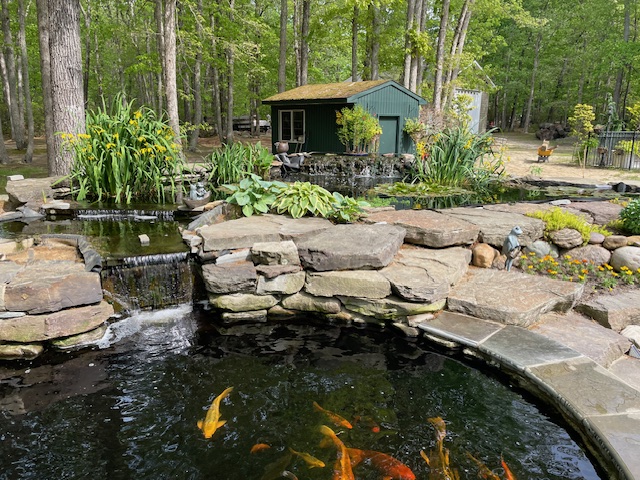
Overview of Low Maintenance Koi Ponds and Biofilters
Low maintenance koi ponds are designed to minimize the time and effort needed for upkeep while ensuring a healthy environment for koi and other pond life. A central technology in these systems is the biofilter, which harnesses beneficial bacteria to maintain water quality and reduce harmful substances.
How Biofilters Work
A biofilter provides a dedicated space for colonies of beneficial bacteria to thrive. These bacteria are responsible for breaking down toxic waste products generated by fish and decaying organic matter:
Ammonia Conversion: Fish waste and decaying matter produce ammonia, which is highly toxic to koi. When water passes through the biofilter, Nitrosomonas bacteria convert ammonia into nitrite, which is also toxic.
Nitrite Conversion: In the next stage, Nitrobacter bacteria convert nitrite into nitrate, a much less harmful substance. Nitrate can be absorbed by aquatic plants or removed through water changes.
Continuous Cycle: This nitrogen cycle operates continuously, provided the biofilter is mature and the water is circulated properly.
Effectiveness and Key Requirements
Biofilters are highly effective at maintaining water quality in koi ponds, but their performance depends on several factors:
Surface Area: Biofilters use specialized media (e.g., plastic beads, mats, gravel) to maximize the surface area available for bacteria to colonize.
Oxygenation: Beneficial bacteria require a constant supply of oxygen. This is typically provided by running the pond pump 24/7, ensuring water is always moving through the filter.
Mechanical Pre-filtration: A mechanical filter (such as a skimmer) is often used before the biofilter to remove larger debris and prevent clogging, improving the biofilter’s efficiency and longevity.
Proper Sizing: The biofilter must be appropriately sized for the pond’s volume and fish load. Undersized filters will not keep up with waste production.
Benefits of Biofilters in Low Maintenance Koi Ponds
Reduced Maintenance: Biofilters, especially those with gravity-fed designs, often require less frequent cleaning and are easy to inspect and backwash.
Stable Water Quality: By efficiently processing ammonia and nitrite, biofilters create a stable environment, reducing stress and disease risk for koi.
Support for Aquatic Plants: The nitrate produced by biofilters acts as a fertilizer for pond plants, which further helps control algae and maintain water clarity.
Natural Ecosystem Balance: Biofilters mimic natural processes, supporting a balanced ecosystem with minimal chemical intervention.
Scalability: Biofilters are available in various sizes and designs, suitable for both small backyard ponds and large, professional koi installations.
Additional Considerations
Startup Time: New biofilters require a “cycling” period (typically 4–6 weeks) to establish healthy bacterial colonies before they can fully process waste.
Continuous Operation: Interruptions in water flow or oxygen supply can kill beneficial bacteria, leading to spikes in ammonia and nitrite.
Complementary Features: Incorporating rocks, gravel, and aquatic plants further enhances the pond’s biological filtration and reduces maintenance needs.
Conclusion
Biofilters are a cornerstone of low maintenance koi pond design. They harness natural biological processes to convert harmful waste into less toxic forms, support plant growth, and maintain clear, healthy water. When combined with mechanical filtration, proper pond circulation, and thoughtful design, biofilters allow koi enthusiasts to enjoy vibrant, low-maintenance ponds with minimal intervention
